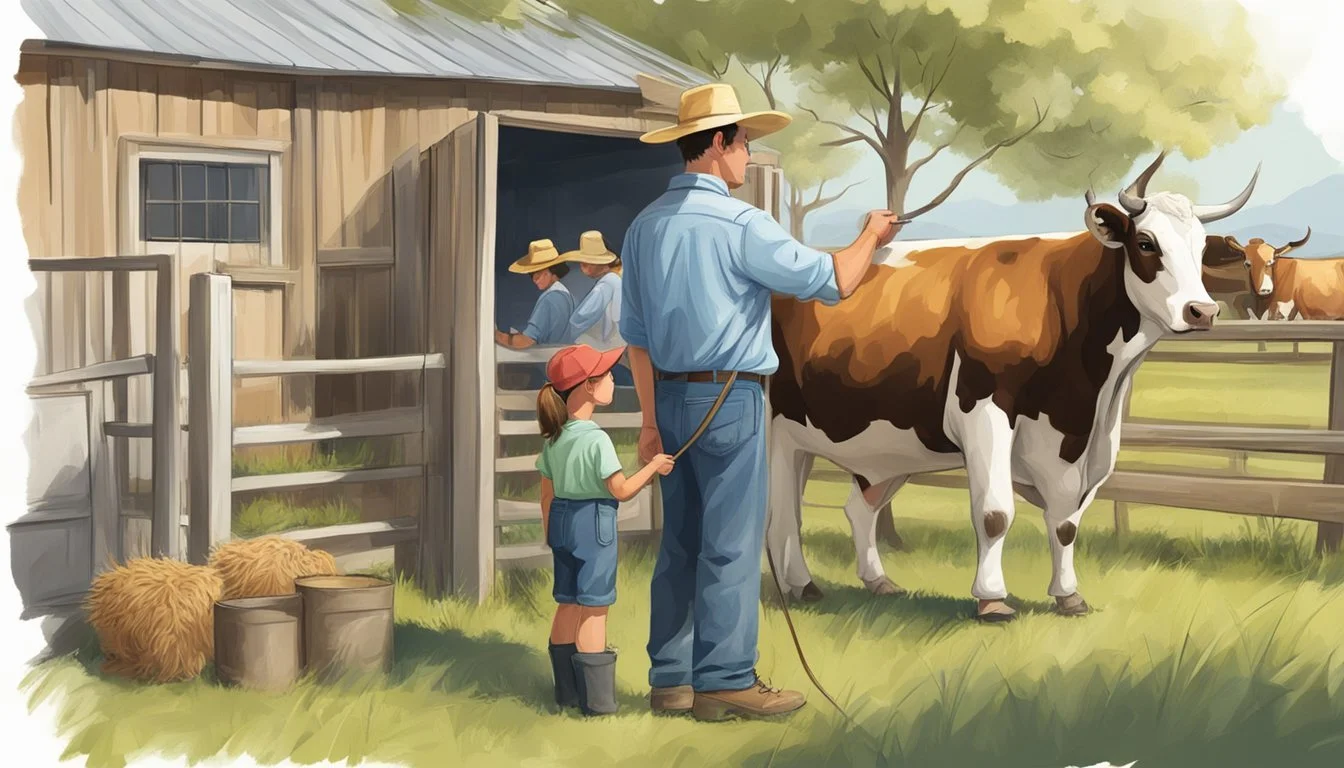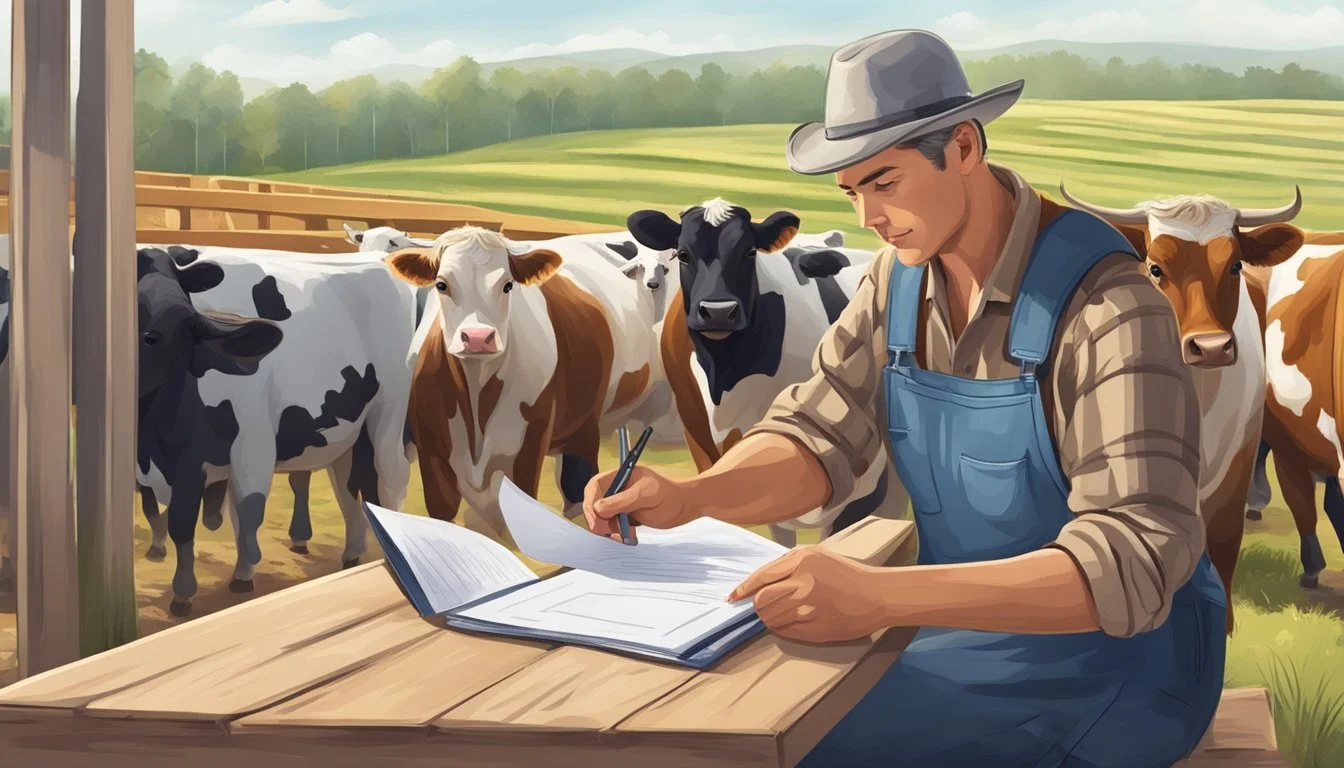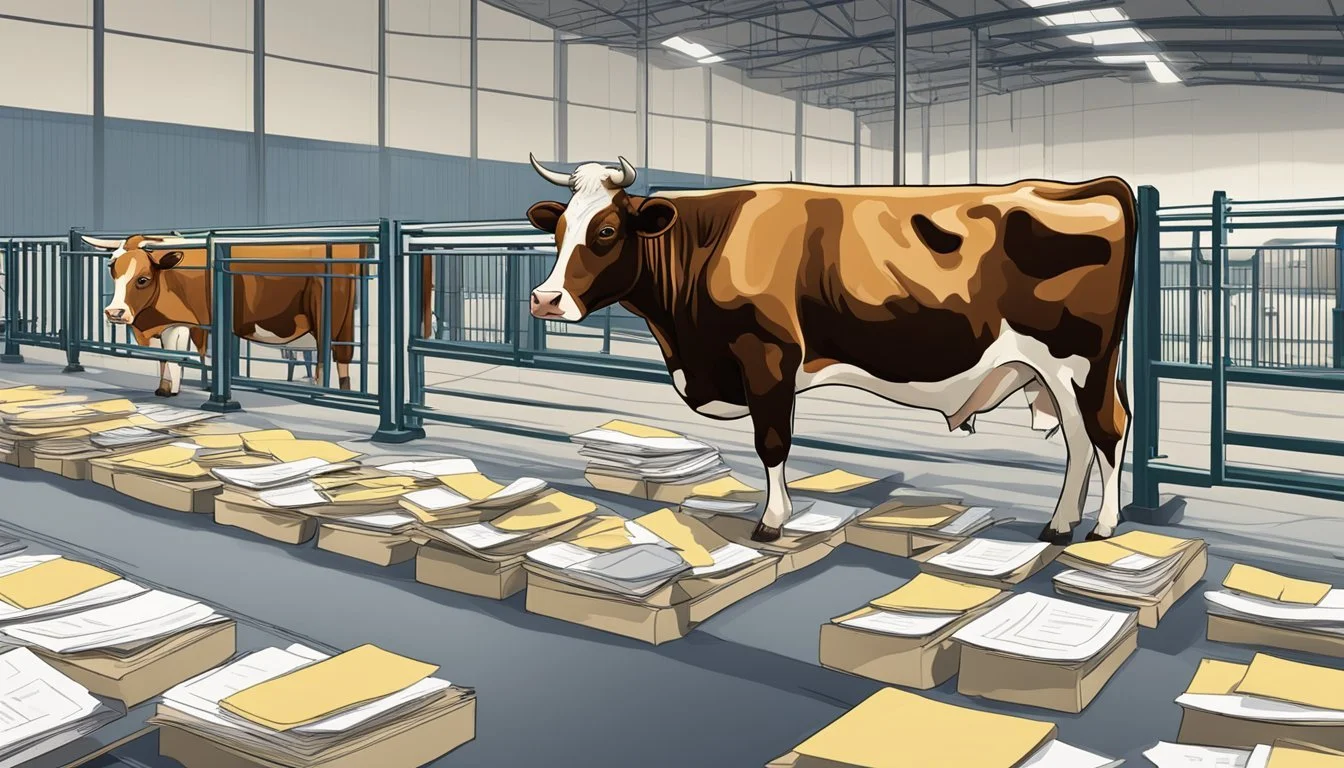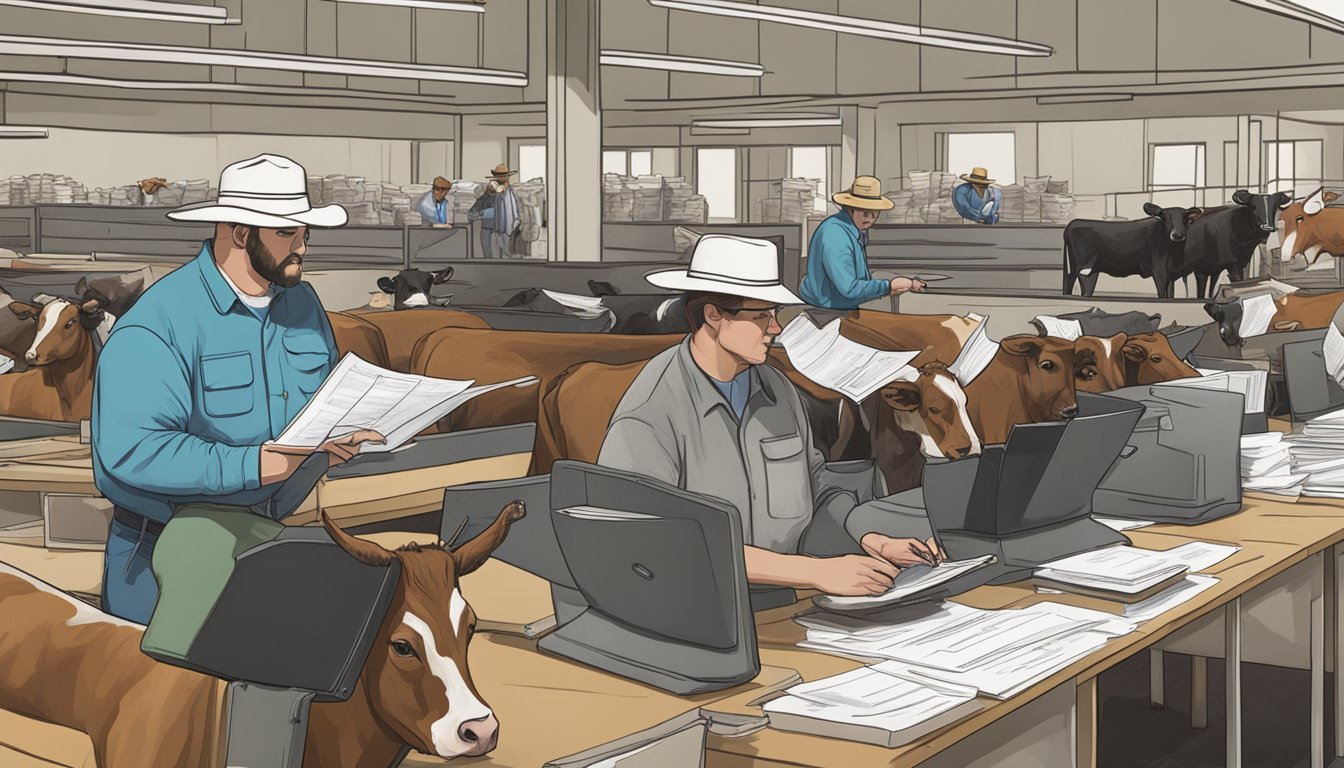What is the Process for Registering Purebred Cattle?
Essential Steps Explained
Registering purebred cattle is an essential step for breeders who aim to establish the pedigree and maintain the lineage records of their herd. The process ensures that the cattle meet specific breed standards and reinforces the integrity of the breed. A registered purebred boasts verified ancestry, which can significantly enhance its value and the potential for revenue within livestock markets.
The procedure begins with the submission of DNA samples and the necessary registration information to a breed association. This typically involves providing details such as the animal's tattoo numbers, official name, and registration number of parents. Accurate record-keeping is paramount throughout an animal's life to maintain the authenticity of its lineage and eligibility for registration.
Registration not only authenticates a bovine's purebred status but also opens up opportunities for participation in shows, sales, and breeding programs that favor registered cattle. Breeders and ranchers with registered herds often see an increase in the marketability and resale value of their livestock, as purchasers are willing to invest more in animals with a documented genetic background.
Basics of Purebred Cattle Registration
Registering purebred cattle is a formal process that authenticates an animal's lineage, affirming its status as a purebred. This process involves comprehensive record-keeping and submission of specific documentation to recognized registries.
Understanding Purebred Registration
Purebred registration is crucial for breeders who aim to maintain the pedigree of their cattle. The process begins with the verification of an animal's parentage, ensuring that both the dam (mother) and sire (father) are registered purebreds. A calf's lineage must be traceable to registered purebreds for it to be eligible for its own registration. Breeders are required to submit a registration application to a cattle registry, an organization that maintains genetic records of a particular breed.
Each cattle must be uniquely identified using an ear tattoo or tag that typically includes the herd identifier and the calf's individual number. Additionally, DNA testing may be required for further validation of parentage, a norm in breeds like American Aberdeen.
Types of Registration Documents
Upon completion of the registration process, the cattle owner receives a registration certificate. This official document provides essential details, such as:
The cattle's registered name and number
Date of birth
Sex
Breed
Color and markings
Identification (tattoo or tag numbers)
Recorded ownership
Pedigree, including names and registration numbers of sire and dam
Different organizations might have varying documents associated with registration. For example, the Beefmaster Breeders Association provides a Purebred/Cross Registration Form. It's important to note that each registry might have specific requirements and fees as highlighted by the American Wagyu Association regarding the ordering of DNA Collector Cards and other testing supplies. Registration not only certifies an animal's bloodline but can also significantly enhance its value in the market, as purchasing decisions often hinge on documented pedigrees.
The Registration Process
Registering purebred cattle involves a series of specific steps geared towards establishing and maintaining the pedigree integrity. Ensuring all documentation is in order and accurately recorded is paramount to a successful registration.
Initial Steps and Documentation
One must first gather all initial documentation, which usually includes the animal's pedigree, tattoo or tag numbers, and the registration numbers of the sire (father) and dam (mother). Accurate records of these details are essential for a legitimate claim of purebred status. For example, organizations such as the American Aberdeen have clear guidelines on these requirements.
Submission of Application
Upon assembling all necessary information, the applicant can proceed to submit the application. Many registries offer online applications, simplifying the process. The application asks for the cattle's unique identifiers and pedigree information. Detailed instructions and forms may be provided, as seen through the American Highland Cattle Association, simplifying the process for breeders.
Verification and Approval
Once an application is submitted, the registry conducts a verification process. They ensure the pedigree is accurate and that the cattle meet all breed-specific requirements. This may involve reviewing the documentation, and possibly DNA testing. Upon successful verification, a registration number is assigned, and the cattle's details are officially recorded in the registry’s database. The applicant typically receives a confirmation via email or mail, completing the process. Registries like the Purebred Dexter Cattle Association follow this protocol to maintain the integrity of the breed.
Genetic Verification
In the context of registering purebred cattle, genetic verification stands as a critical step in confirming the lineage and genetic integrity of the animal. By employing DNA tests, breeders can ensure that the cattle meet the breed association's standards for purity and desirable traits.
Importance of DNA Testing
DNA testing is instrumental in establishing the genetic makeup of purebred cattle. It is an irrefutable method to verify that an animal's genetic material aligns with the documented pedigrees, which is paramount not only to breeders but also to buyers who are looking for quality assurance. For breed associations, DNA testing is essential in maintaining the breed's integrity and the reliability of its genetic evaluations.
Conducting DNA Tests
To conduct DNA tests, breeders collect samples, often in the form of hair cards or blood samples, and send these to genetic testing facilities such as Neogen. These tests can range in complexity from simple parentage verification to more comprehensive screenings for genetic disorders and traits. The cost for these tests varies, generally between $15 to $90 per head, depending on the breath of information sought.
Parentage Verification and Records
Confirming parentage through DNA testing is more cost-effective than full-genome testing and is critical for breed purity. Parentage verification requires the breeder to submit DNA samples to be matched with the DNA on record for the sire and dam. This process ensures that the recorded lineage is accurate. For breeds that require it, validation of parentage is a non-negotiable step in the registration process, with detailed records maintained through the breed association.
Association Membership and Bylaws
To register purebred cattle, breeders must first become members of a breed association, adhering strictly to their specific bylaws and rules.
Joining a Breed Association
Breeders interested in registering their cattle should begin by joining a breed association pertinent to their cattle's lineage. Membership often requires adherence to a detailed set of bylaws and meeting defined breed standards. For instance, to register cattle within the American Aberdeen Association, one must provide detailed genetic information and comply with tattoo identification requirements.
Understanding and Following Bylaws
The bylaws of an association govern the operational protocol and mandatory rules for all members. It is imperative for breeders to thoroughly understand these bylaws, as failure to comply can lead to membership termination or registration denial. For example, under the American Wagyu Association's bylaws, DNA parentage testing is required for registering Fullblood and Purebred Wagyu cattle, emphasizing the importance of such rules for maintaining breed integrity.
Identifying Cattle
The registration of purebred cattle hinges on clear and reliable identification, which is essential for maintaining accurate records. Associations often have stringent requirements to ensure each animal's lineage and traits are preserved for breeding purposes.
Ear Tags and Tattoos
Ear tags are a common, non-permanent method of identifying cattle. They are easy to apply and visible from a distance, often containing information such as the animal's registration number or the year of birth. The latter can follow an international letter code system, with each year assigned a specific letter. For instance, the letter for 2024 would be "M" based on this system. Additionally, tattoos provide a more permanent form of identification, usually inside the ear. They are required by most breed associations and are indispensable for animals in brucellosis vaccination and monitoring programs.
Brands and Permanent Identification
Permanent identification methods like brands are traditional and involve marking the animal with a heated iron, resulting in a unique symbol often required by breed associations, and helpful in the event of tag loss. Besides hot-branding, some breeders use other techniques such as freeze-branding, which affects the pigment of the hair rather than the skin. This form of permanent identification is particularly vital in establishing ownership and for the traceability of cattle within the industry.
Identifying cattle with these methods ensures that individual animals can be tracked throughout their lives, preserving the integrity of the breed and adhering to the requirements set out by the governing breed associations and agricultural authorities.
Payment and Fees
The process of registering purebred cattle involves specific fees and acceptable payment methods. Breeders should understand how these costs accumulate and what methods of payment are accepted to ensure a seamless registration process.
Calculating Registration Fees
Registration fees vary widely depending on the breed association and the age of the cattle at the time of registration. For instance, the Beefmaster Breeders Association outlines a structured fee schedule, typically starting with a base office entry rate plus an additional charge for each animal. Fees can also be influenced by membership status and the time frame in which the cattle are registered—early registration often results in lower fees.
Example of Fee Structure:
Office Entry Rate: Online Entry Rate + $5 for the first animal
Additional Animal Entry: Online Entry Rate + $2 each
Methods of Payment
Breeders are commonly offered several forms of payment when registering their cattle. Accepted payment methods typically include credit card, check, or money orders. It is important to note that some breeders might need to plan for the possibility of additional service charges when using certain payment methods. A timely check payment helps avoid late fees and delays in processing the registration.
Accepted Forms of Payment:
Credit Card (Visa, MasterCard, etc.)
Check
Money Order
For a concrete understanding of the payment expectations, breeders are encouraged to contact the relevant breed association or refer to their websites, as fees and payment policies can be subject to changes.
Ownership and Transfer
When registering purebred cattle, accurately updating ownership status and processing transfers is vital for maintaining pedigree and lineage records. These processes are integral to the value and traceability of purebred cattle.
Updating Ownership Status
The updating of ownership status is a crucial administrative task for breed associations. It is important to record any changes in ownership with the appropriate cattle registry to ensure that the official breed records are current. For instance, the American Maine-Anjou Association keeps detailed records of registration and transfer documents for a period of five years after which the history is maintained only in their database.
Process of Transferring Cattle
Transferring cattle involves several steps to ensure that both the buyer and seller adhere to the breed association’s guidelines. Transfer forms, which typically include the signature of the seller and the details of the buyer, must be submitted to the association. This allows for the official records to be updated accordingly. As noted by Grit, it is the seller's responsibility to transfer registration paperwork to the new owner, ensuring the association can accurately track the transfer of each animal.
Breed-Specific Information
When registering purebred cattle, it's essential to consider the unique requirements and processes established by breed associations, which can vary greatly. This includes recognition of fullbloods, handling of rare breeds, and abiding by exacting breed-specific rules.
Fullblood and Rare Breeds
Fullblood cattle are those with an ancestry that traces back to its breed's country of origin without any crossbreeding. For rare breeds, associations often provide specific support and guidelines to preserve these genetic lines. For instance, the National Association of Animal Breeders publishes guidelines which are essential for maintaining purebred status, especially for rare breeds that may have smaller genetic pools.
Breed-Specific Registration Rules
Each breed association has distinct rules for registering cattle. The Brahman breed, known for their distinctive hump and resistance to harsh conditions, often requires DNA verification and detailed pedigree information for registration. On the other hand, Hereford cattle, recognized for their red body and white face, may have different document requirements such as proof of parentage and specific tattoo numbers. Breeders must adhere to their respective breed guidelines for tattoo requirements to successfully register their cattle.
Cattle Performance Records
Maintaining accurate performance records is essential for evaluating the productivity and efficiency of cattle in any operation. These records not only provide a historical overview but also influence critical decisions impacting profitability and genetic advancement.
Recording Performance Data
Producers meticulously track a variety of indicators to assess individual and herd performance. Important data typically include weaning weight, which reflects the animal's ability to convert feed into growth, and puberty age, as early maturing animals often have superior reproductive lifespans. Other key metrics involve environmental adaptability, health status, and specific production traits such as average daily gain. Tools from simple ledger books to sophisticated, technology-based systems are employed to capture and analyze cattle performance, laying the foundation for informed management decisions.
Impact on Fertility and Milk Production
Analyzing performance records has significant implications on fertility and milk production. For fertility, records are instrumental in monitoring reproductive efficiency, detecting patterns, and addressing issues through genetic selection or management changes. Similarly, meticulously documented milk production records are vital for ensuring calves receive adequate nutrition for optimal growth. Data insights help improve breeding programs and nutritional management, enabling herds to thrive under diverse environmental conditions.
Crossbreeding and Registrations
In the context of purebred cattle, registration is crucial to maintain breed integrity, while crossbreeding necessitates careful record-keeping to ensure proper documentation of lineage and breed percentages for future breeding decisions.
Crossbreeding with Purebred Cattle
Crossbreeding involves the mating of purebred cattle from two different breeds, resulting in offspring with genetic material from both parents. This practice can introduce desirable traits and increase hybrid vigor or heterosis. However, it is essential to understand that registrations for crossbred cattle can be more complex. Crossbred animals may not qualify for registration within purebred breed associations, as these usually require documented pedigrees proving purebred status.
For instance, crossbreeding may yield a 50/50 mix of two breeds, with all calves being half one breed and half another. Further complexity arises when these crossbred individuals are bred again, potentially to a third breed, creating a blend of genetics that can be valued for specific traits but harder to categorize for registration purposes.
Some breed associations offer specific crossbreeding programs. These programs are designed to track the genetics and performance of crossbred animals. Registrations in such cases often require DNA samples to validate parentage and verify breed percentages. A clear example is the Beefmaster Advancer Program, which requires the submission of weaning weights at the time of registration and a DNA sample with a genomic services vendor.
Farmers and ranchers involved in crossbreeding programs must be diligent in record-keeping. This documentation includes detailed records of each animal's parentage and characteristics that could be important for future breeding and sale.
Programs designed for the registration of crossbred animals uphold the integrity of the breeding process while also providing buyers with clear information regarding the animal's lineage. The focus on accurate and thorough registration helps to enhance the value of crossbred cattle and gives producers a way to substantiate the genetic merit of their livestock.










